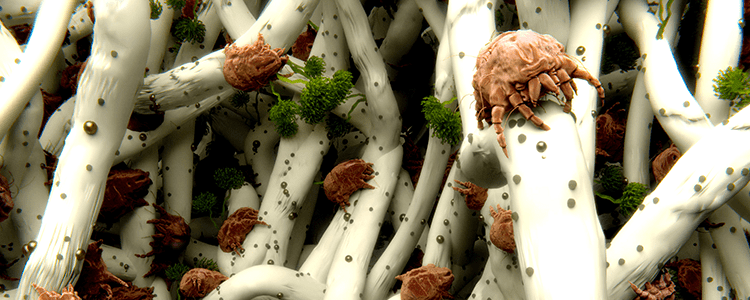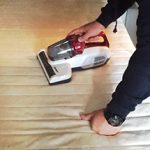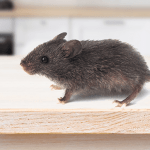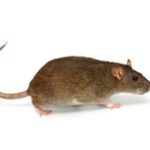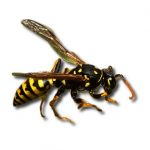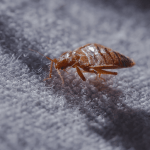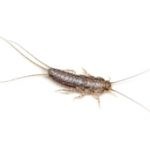Do Dust Mites Bite? Identifying Rashes, Allergies, and Bed Bug Confusion
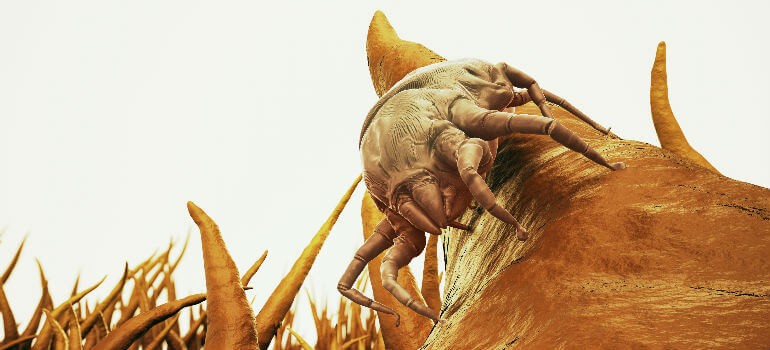
What are dust mites and can dust mites bite? Many species of mite live in household dust. However, two of the most common found in the UK are Dermatophagoides pteronyssinus and Dermatophagoides farinae. Despite common misconceptions, dust mites do not bite. In fact, dust mite bites are a myth – none of the species typically found in British homes are capable of biting humans or pets.
However, there are other types of mites that do bite, including scabies mites, which are highly contagious and can cause intense skin irritation, and outdoor mites like harvest mites or oak mites. These biting mites may leave marks that only become noticeable indoors due to the warmth, leading people to mistakenly suspect house dust mites as the source.
So, if you’re wondering, “Can dust mites bite humans?”, the answer is a firm no. While dust mites don’t bite or sting, they are still considered a household pest because of their potential to trigger dust mite allergies. It’s not the mites themselves but their faeces and shed skin particles that can provoke allergic reactions, especially in those with asthma, eczema, or hay fever.
Understanding dust mite allergy symptoms and triggers
Allergic reactions to dust mites are incredibly common in the UK, particularly among people with bronchial asthma, eczema, or hay fever. In fact, it’s estimated that in urban areas, up to 25% of the population may suffer from some degree of dust mite allergy, ranging from mild irritation to more severe, chronic symptoms.
Read more: What Bugs Cause Allergic Reactions
How dust mites cause allergies
The culprits aren’t the live dust mites themselves, but the protein-rich particles found in their faeces and decomposed bodies. These tiny allergens can easily become airborne, especially when disturbed by vacuuming, sitting, or movement on furniture. Once inhaled by sensitive individuals, they can trigger the release of immune responses, including histamine production, which leads to allergy symptoms such as sneezing, wheezing, congestion, itchy eyes, and coughing.
Where dust mites live in the home
Because dust mites feed on dead skin cells, they thrive in areas where skin flakes accumulate, particularly in carpets, mattresses, upholstered furniture, and rugs. Considering the average person sheds about 1.5 grams of skin cells daily, that’s enough to sustain millions of dust mites, especially in warm, humid indoor environments typical of UK homes.
Read A Simple Guide to Get Rid of Clover Mites
Recognising dust mite allergy symptoms
Dust mite allergy symptoms often resemble those of hay fever, making it tricky to pinpoint the exact cause without a context. Common signs include watery eyes, red or itchy eyes, and nasal irritation. If these symptoms occur indoors, particularly while vacuuming, dusting, or cleaning, it may indicate a house dust mite allergy rather than a seasonal pollen reaction. In contrast, if symptoms worsen outdoors during periods of high pollen count, hay fever is more likely the culprit. However, many individuals in the UK are sensitive to both pollen and dust mites, experiencing overlapping reactions throughout the year.
Respiratory symptoms of dust mite allergy
Most dust mite allergy reactions fall into two categories: respiratory issues and skin symptoms. On the respiratory side, common signs include:
- Nasal congestion
- Sneezing and persistent coughing without any signs of infection
- Asthma-like symptoms, such as shortness of breath, wheezing, and a tight chest
These symptoms often worsen at night or in the early morning when lying on dust mite-infested bedding. Recognising the pattern and environment in which symptoms appear is crucial for proper management and dust mite allergy treatment. Many people report increased itching at night, which raises the question: “Do dust mites make you itch in bed?” For those with dust mite allergies, the answer is often yes. This is typically due to a reaction to allergens in bedding, not from the mites themselves.
Skin symptoms of dust mite allergy
Although dust mites don’t bite, they can still trigger skin reactions in sensitive individuals, which leads many to wonder: “What do dust mite bites look like?” While there are no actual bites, a dust mite allergy rash can resemble small red patches on the skin. These areas are usually itchy but not painful, and they don’t bleed unless scratched.Unlike insect bites, this reaction is not caused by a puncture wound, but by an immune response to allergens in dust mite waste and body fragments.
It’s important to distinguish between dust mite rash and skin irritation from other sources. For example, a scabies rash is usually scaly, raised, and concentrated in skin folds like between the fingers, elbows, and knees. Meanwhile, outdoor mite bites, such as from harvest or oak mites, may cause more dramatic symptoms, including blistering or intense itching after time spent outside.
When it comes to dust mite bites vs bed bug bites, remember that dust mites don’t actually bite. If you notice large, red welts or hard bumps, particularly in a clustered pattern, it’s more likely you’re dealing with a bed bug infestation. Bed bug bites often occur at night and may leave a distinctive line or zigzag mark, unlike the more subtle rash associated with dust mite allergies.
Read more: How to Get Rid of Dust Mites?
Dust mites vs bed bugs: Key differences and how to tell them apart
If you’re wondering whether you’re dealing with dust mites or bed bugs, you’re not alone. Many people mistake dust mite allergy symptoms for bed bug bites, especially since both pests can be found in bedding and mattresses. However, there are some clear differences between them.
Unlike bed bugs, dust mites don’t bite. Bed bugs feed on human blood, while dust mites feed on dead skin cells. You can see bed bugs with the naked eye, but dust mites are microscopic – you’d need a microscope to view them. It’s often said that you could balance 50 dust mites on a pin.
Here’s a comparison to help you identify which pest might be affecting your home:
- Bed bugs bite, dust mites don’t
- Bed bugs are visible, dust mites are not
- Bed bug bites often appear in clusters or lines, while dust mite rashes are more diffuse and patchy
- Bed bugs are eliminated using insecticides, but dust mite control requires environmental management
- Dust mites can trigger asthma and severe allergies, while bed bug reactions are usually localised to the skin
- Total elimination of dust mites is not possible, but bed bugs can be fully eradicated
If you’re unsure, always consult a pest control expert or an allergy specialist to get a proper diagnosis.
Prevention tips for dust mites and bed bugs
Interestingly, many of the strategies used to get rid of bed bugs can also help reduce dust mite infestations. Here are some of the most effective methods:
- Dust with a damp cloth to trap allergens and avoid dispersing particles
- Vacuum after dusting to pick up settled debris, using a HEPA-filter vacuum cleaner
- Wash bedding in hot water (60°C or above) once a week to kill mites and bed bugs
- Use anti-allergen mattress and pillow covers
- Replace carpets with hard flooring like laminate or hardwood
- Maintain indoor humidity below 50% with a dehumidifier or ventilation system
- Clean HVAC filters regularly to prevent the accumulation of dust and mite allergens
These practices won’t completely eliminate dust mites, but they will significantly reduce their population and help create a healthier indoor environment.
Conclusion: Do dust mites bite or is it something else?
If you’ve been wondering whether you’re dealing with dust mite bites or bed bug bites, rest assured – dust mites don’t bite and they don’t spread disease. However, they are a major trigger for asthma symptoms and dust mite allergies, especially in people with respiratory sensitivities.
While it’s not possible to completely eliminate dust mites, you can take steps to reduce dust mites in your home and relieve allergy symptoms. Focus on dust mite control in bedding, mattresses, and bedroom environments by following a consistent cleaning routine and using protective covers.
On the other hand, if you’re dealing with bed bug infestations, regular cleaning can help, but may not be enough. For severe bed bug problems, it’s best to hire professional pest control services to ensure complete eradication.
By understanding the differences between dust mites and bed bugs, and using the right preventative measures, you can maintain a cleaner, healthier home and enjoy better indoor air quality.
Want a professional to inspect your home?
We only provide valuable information regarding dust mites and the possible health risks they hide. But we as a commercial service provider cannot give you medical advice.



